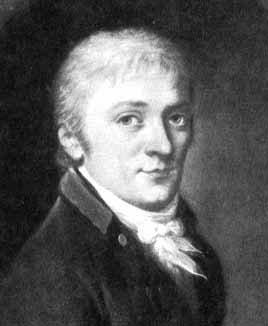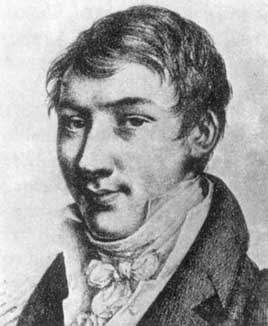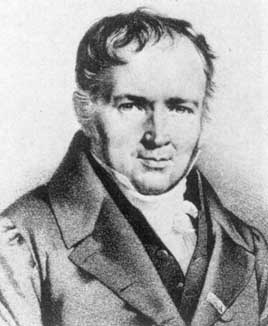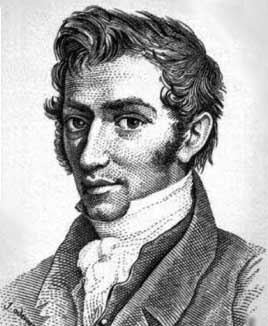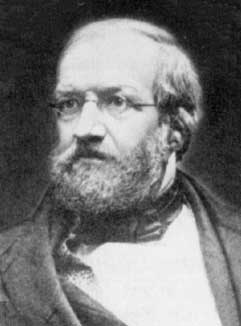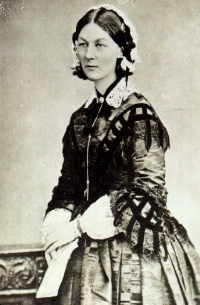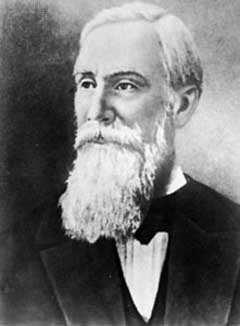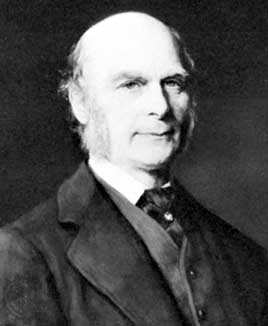1777-1855
Gauss, born in Germany, published Theoria Motus Corporum Coelestium in Sectionibus Conisis Solum Ambientium (“The Theory of the Motion of Heavenly Bodies Moving about the Sun in Conic Sections”). This book primarily concentrated on planetary orbits, but also included a section where he addressed combinations of observations from a purely probabilistic point of view. Gauss, while trying to solve a system of equations involving the error curve, found a distribution for the errors that pointed towards the method of least squares. Although his reasoning for the error distribution was faulty, his work provided Laplace with the necessary link between linear estimation and the central limit theorem. Once this link was realized, Gauss’ method of least squares was improved, using a normal distribution for the error terms. Later, Gauss employed second moments to arrive at least squares estimators in what is now called the Gauss-Markov theorem. Gauss’ and Laplace’s discoveries merged the employment of probability to make inferences with the coalescence of observations through linear equations.
Quotations1789-1857
Augustin Louis Cauchy, from France, published a memoir in Journal de l’Ecole Polytechnique, 28 Cahier (1841) on definite integrals, which he had previously presented in 1815, in which he expounded on Laplace’s work in this area.
1781-1840
Simon Denis Poisson, a Frenchman, published the book Recherches sur la probabilite des jugements en matiere criminelle et en matiere civile (researches on the probability of criminal and civil verdicts) (1837).In this book he presented the Poisson probability distribution as a limit to the binomial distribution when the probability of success is small and the number of trials is large. He also expanded Bernoulli’s law of large numbers to include unequal probabilities of success for independent events.
1796-1874
Quetelet, was a Belgian who studied mathematics under Joseph Fouier and Pierre Laplace, statistics, astronomy, and sociology. Quetelet is famous for utilizing statistics in the social sciences, geophysics, and meteorology. He found new uses for the normal curve and created the Quetelet index. This index is still used today to measure obesity.
1805-1859
Dirichlet was a German mathematician who specialized in number theory, analysis and mechanics. He has the credit of defining the function as it is used today. He did much work on measure theory and is remembered for his work on primes. He laid the foundation for analytic number theory while deriving Dirichlet’s Theorem, for which he is especially remembered.

1806-1871
Augustus DeMorgan was an Englishman born in India, who wrote an article entitled “Theory of Probabilities” in the Encylopaedia metropolitana (1845). In this article, DeMorgan presented (again) Laplace’s Theorie Analytique. DeMorgan was instrumental in the advancement of logic, reforming the restrictive approach of Aristotle, and is best remembered of for his DeMorgan's Laws, which are widely used in probability theory.
1820-1910
Florence Nightingale was born in Italy and is best remembered for her relentless efforts to improve healthcare and her extensive accomplishments as a nurse. For her work in statistics, she holds the honor of being the first woman to be elected as a fellow of the Statistical Society. In order to achieve her goal to improve medical conditions and treatments, Florence Nightingale did unprecedented statistical work in army statistics and hospital statistics. She analyzed the effectiveness of medical treatments and encouraged all hospitals to do likewise so that comparative analyses could be performed. She also did unprecedented data analysis and statistical work in occupational health and safety and maternal mortality in childbirth.
1821-1894
Chebychef, a Russian professor and founder of St. Petersburg mathematical school, is noted for his famous inequality, Chebychev’s Inequality, which he used to provide a simplified and more general proof of the law of large numbers. Chebychev also made other contributions to Mathematics, especially work relating to prime numbers.
1822-1911
Francis Galton an Englishman and first cousin to Charles Darwin. He published a work entitled Meteorgraphica (1863), which analyzed multivariate data using graphical methods, while working on weather patterns. Galton is also known for his applications of statistics in other sciences and experimenting with fitting data to normal curves and graphing data in order to determine whether to it should be considered together. Through his experimentation with graphing data, he discovered the inverse normal cumulative distribution function. Galton used measurable qualities to draw inferences on immeasurable qualities of a sample of the population in Hereditary Genius. He found a connection between regression and the bivariate normal distribution and used this relationship to prove that heredity had an influence on one’s intelligence. He called this connection reversion. His major breakthrough was his realization that the addition of independent normal distributions was a normal distribution, and that this idea could be applied to the combining of multivariate data. Galton’s work opened the door to the study of correlation, and he is referred to as one of the very first statisticians.Galton's Fingerprints.
1834-1923
John Venn was an English priest and professor of logic and probability theory at Cambridge University. He is best remembered for his famous Venn diagrams. Venn used these diagrams to symbolically represent sets, the intersection of sets, and the union of sets. Venn published Symbolic Logic (1881) and The Principles of Empirical Logic (1889). Since sample spaces are just collections or sets, the Venn diagrams are helpful in determining the desired sets for which a probability is needed.
1837-1914
Wilhelm Lexis, a German statistician, published many papers on population and vital statistics between 1876 and 1880. Lexis is best known for his work on statistical (time) series.
1845-1926
Francis Edgeworth, a distant Irish cousin of Galton, an economics professor and self-taught mathematician, was influential in getting Pearson interested in statistics. Edgeworth published Mathemaical Psychics: An Essay on the Application of Mathematics to the Moral Sciences (1881) in which he analyzed economic contract and competition. Edgeworth published many articles on probability and statistics in the Philosophical Magazine and Mind. These articles encouraged Edgeworth to begin his work on applying statistical methods to the social sciences. This work was presented in four papers published in 1885: “Observations and statistics: An essay on the theory of errors of observation and the first principles of statistics”; “Methods of statistics”; “On methods of ascertaining variations in the rate of births, deaths, and marriages”; and “Progressive means”. Edgeworth addressed correlation in his paper, “Correlated averages” (1892). He then worked on the multivariate normal distribution, introducing the notation, p, for the correlation coefficient, and found solutions to the correlation matrix.
1856-1922
Andrei Markov, a Russian professor at St. Petersburg University, is noted for his contributions to the development of stochastic processes, primarily Markov chains. Markov chains are series of events in which the state of the next future event is only dependent on the state of events at the present. Markov also provided a proof of the Central Limit Theorem. The Central Limit Theorem in action.
1857-1936
Karl Pearson, an Englishman, obtained his Mathematics degree with honors from King’s College, Cambridge in 1879. Pearson was a major contributor in founding modern statistics. He was the first to use the term “standard deviation”. Pearson published an enormous work on scew curves in Philosophical Transactions of the Royal Society (1894 and 1895). In 1900 Pearson presented his Chi-square distribution, which he used in place of the normal distribution to solve the goodness of fit for multinomial distributions. Pearson’s work on scew curves and correlation was published in a series of memoirs entitled “Contributions to the Mathematical Theory of Evolution”
